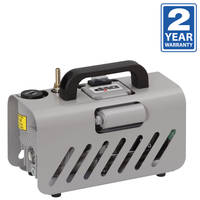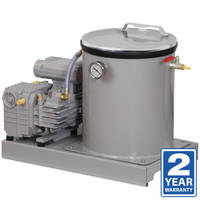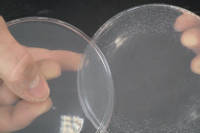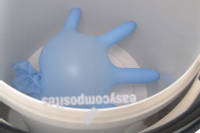Need any help or advice?+44 (0)1782 454499
USED IN THIS PROJECT
Although not necessarily an exhaustive list, the following tools and materials, supplied by Easy Composites, were used in this project.
The quantity shown below is the approximate amount used in the project rounded up to the nearest available kit size or quantity.
TOOLS & EQUIPMENT




VIDEO TUTORIAL
How and Why to Vacuum Degas RTV Silicone Rubber and Casting Resins
Video tutorial demonstrating how to degas silicone and casting resin and the benefits of degassing materials like RTV silicone rubber and casting resins (like Fast Cast polyurethane or water-clears) to improve your moulds and castings. We use our Complete Vacuum Degassing System and demonstrate how simple the process is and why we do it at various stages such as during silicone mould making, before pouring casting resins and also in-mould degassing.
Degassing is a highly effective process for removing trapped air from within mixed materials such as RTV Silicone Rubbers, Polyurethane Casting Resins, Infusion Epoxies - all sorts of materials where air can become entrapped when the two parts of the material are mixed together.
TUTORIAL BREAKDOWN

1. Examples
Example 1 - shows RTV Silicone in its cured state when no degassing has taken place. Air bubbles are clearly visible trapped within the silicone.
Example 2 - shows the same RTV Silicone in its cured state, after degassing in the Vacuum Degassing Chamber. It has no air entrapment whatsoever and has a completely clear appearance.
The piece that has been degassed will have improved tear strength and give improved surface finish.
Example 3 - Shows Water Clear Polyurethane Resin which was mixed and left to cure with no degassing. There are fine air bubbles trapped within the resin.
Example 4 - Shows the Water Clear Polyurethane Resin again which was mixed then degassed in the Vacuum Degassing Chamber before curing and is visibly perfectly clear with no air entrapment.

2. Vacuum degassing chamber
Degassing chambers are commonly used for degassing resins once they have been poured into a mould. This is particularly true of moulds with fine surface detail and undercuts. The reason for this is explained in the demonstration using a nitrile glove.
The glove experiment shows why degassing is advisable and the principle behind degassing.
The whiteboard diagram explains how the degassing process helps to achieve consistent results when using moulds with undercuts.
3. Featured products
The Easy Composites Complete Vacuum Degassing System is available with a choice of large or small DVP vacuum pump. The large vacuum pump will empty the chamber in around 30 seconds making it the right pump when working with materials with a shorter pot life such as fast cast polyurethane resins and water clear polyurethane whereas the small pump takes around 3 minutes to draw down making it more suitable for use degassing silicone rubbers.
Follow equipment set up according to the manufacturers instructions.
4. Degassing demonstration using RTV silicone rubber
The demonstration shows the mixing of the silicone rubber with the catalyst which has trapped air bubbles in the mix. The mix is placed into the chamber, the lid put on and valves turned to their correct position then turned on and very quickly you can see that the air starts to expand, frothing and foaming as it begins to degas. The air in the mixture continues to expand, making the mixture expand until it reaches the self collapse stage. The air bubbles expand to such an extent that they collapse and the mixture falls in on itself. When the degassing process is complete turn the pump off and turn the valve to put the air back into the chamber it quickly becomes apparent the extent the degassing has had upon the mixture.
The mixture is now perfectly clear and ready to be poured. Once poured it is placed back in the vacuum chamber and degassed for a 2nd time before being left to cure.
The 2 step degassing process has resulted in a perfect silicone mould, and it can be used on most materials where air entrapment can be a problem.
DISCUSSION (14)
Please share any questions or comments you may have about this video tutorial.
LEAVE A COMMENT OR QUESTION
USED IN THIS PROJECT
Although not necessarily an exhaustive list, the following tools and materials, supplied by Easy Composites, were used in this project.
The quantity shown below is the approximate amount used in the project rounded up to the nearest available kit size or quantity.
TOOLS & EQUIPMENT




DISCUSSION (14)
Please share any questions or comments you may have about this video tutorial.
LEAVE A COMMENT OR QUESTION
100% SECURE
PAYMENT METHODS


Easy Composites Ltd, registered in England 7486797. All content copyright (C) Easy Composites Ltd, 2025. All rights reserved.
